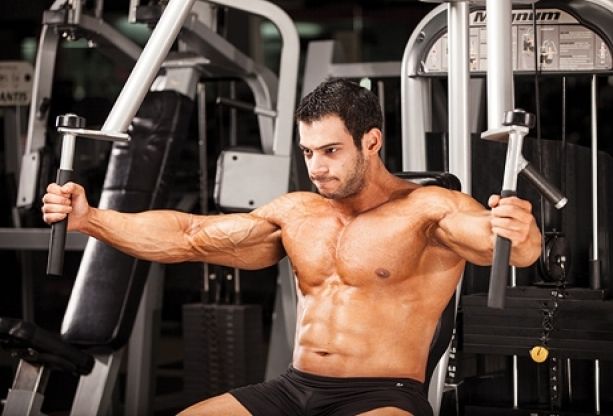If you asked a hundred bodybuilders what their top five chest movements would be, the answers probably wouldn’t vary all that much. Sure, they would be in different order, but you can rest assured the top five would likely be sprinkled with incline and flat dumbbell and barbell presses, along with dips and cable crossovers. You can also rest assured that machine flyes probably wouldn’t even make the top ten list of most useful chest exercises. Machine Flyes are seldom mentioned because they aren’t all that exciting of an exercise. They don’t build mass, so they’re not particularly popular with young bodybuilders. Their poundage’s are meaningless, so they aren’t all that interesting to powerlifters. They are often seen as an exercise which is completed by beginners on their home bench set with the butterfly attachments, or one of the nautilus machines at the gym frequented by the elderly trainers while the real bodybuilders crowd the free weight area. Face it: machine flyes get no respect!
Despite their dismal reputation, machine flyes are actually a very effective movement for developing the inner or middle pectorals, an area which is weak on a great number of bodybuilders. If you were genetically cursed with any sort of gap between your pectorals, then machine flyes are an absolute requirement for you. In the pre-contest phase, machine flyes are also highly useful. They help to etch out definition in the entire pectoral region. Used with high repetitions and medium weight, they drag a lot of blood into the chest. They don’t build mass – and every bodybuilder should be well aware of this fact. You would be wasting your time to use machine flyes at the start of your routine. However, they do offer a nice pump, which is required if you want your chest to show definition.
The exercise will vary from gym to gym, depending upon the model and brand or generation they purchased. Some machines will allow the user to adjust settings, while others will be stationary. Work to find one that allows you the most possible flexibility and access to the muscle fibers you are working so hard to target. Always set the handle to allow you the greatest range of motion. This will recruit the maximum amount of muscle fibers and keep the pectorals engorged with as much blood as possible. Your reps should be completed in a slow and deliberate motion. You should move from 10 to 15 reps with each set.
If no machine flyes are available at your gym, you can emulate the movement – and possibly improve upon it – by using flat dumbbell flyes. The movement is essentially the same. The only difference is that the weights have a free range of motion. This increases the likelihood of injury, as machine flyes are a very safe movement and dumbbell flyes are not. However, this freedom of range also allows the dumbbell variety to arguably allow for more muscle fiber recruitment. Use both movements for maximum effectiveness in your training.

